Gallery Network
7 Questions for Artist Julia Garcia on Her Nostalgia-Laced Compositions
'Slow Burn' is currently on view with Gaa Gallery.
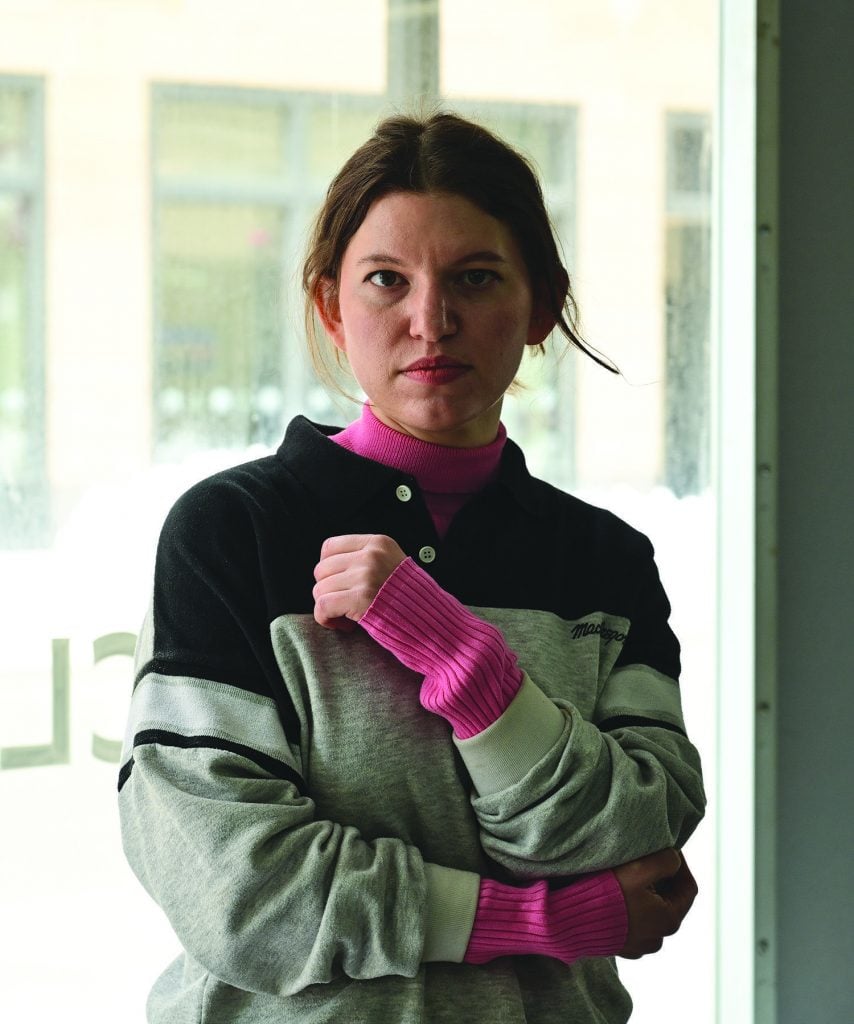
'Slow Burn' is currently on view with Gaa Gallery.

Artnet Gallery Network

Cuban-American artist Julia Garcia employs acrylic paint, ink, and dye in her paintings to create compositions that invite scrutiny, with the forms and figures seeming to blur and coalesce at the same time. Originally from Pompano Beach, Florida, and currently based in Minneapolis, Minnesota, Garcia is a graduate of the School of Visual Art and Hoffberger School of Painting at Maryland Institute College of Art with a BFA and MFA respectively. Her paintings are reminiscent of collage, with imagery that has been mined from a range of often disparate sources that she creatively unites.
On view through May 4, 2024, at Gaa Gallery, Garcia’s debut solo exhibition in New York “Slow Burn” features a body of new paintings and works on paper that probe ideas of nostalgia and desire—and the power each hold on both a personal and societal level.
Marking the occasion, we caught up with Garcia to learn more about how she creates her otherworldly images, and how the history of painting—and art on the whole—influences her practice.
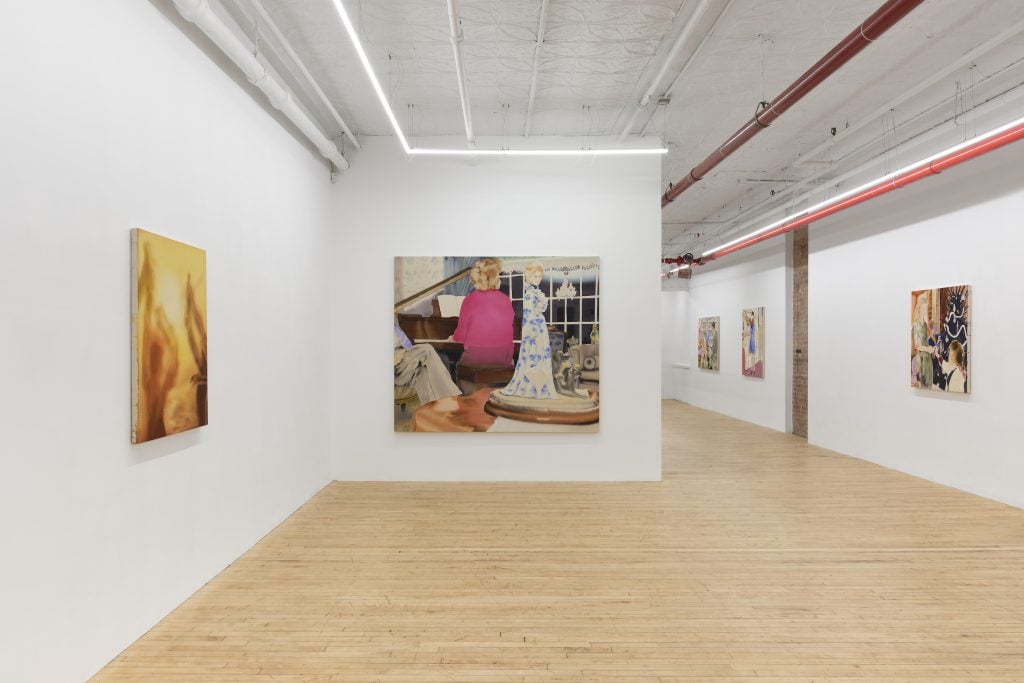
Installation view of “Julia Garcia: Slow Burn” (2024). Photo: Matthew Sherman. Courtesy of the Artist and Gaa Gallery, New York.
Your solo exhibition “Slow Burn” at Gaa Gallery New York opened this week, can you tell us about the subject or themes behind the show?
It’s work that is pulling from the nostalgic feeling of images, which partially act through content, but also in the way they’re rendered. I use un-gessoed canvas, applying water before the acrylic and ink so the paint is subjected to the flow of liquid on the surface. Pigment is dispersing as time passes and the water evaporates—softening edges and mingling forms so that they bleed together. I’m referencing photographs, but because of the unfixed quality of the paint, their reliability as source documents is called into question. It’s a blurring that memory or nostalgia itself performs, where it delivers more fantasy than reality, and I’m interested in kind of playing with that. Fantasies serve someone, they have a relationship to a subject.
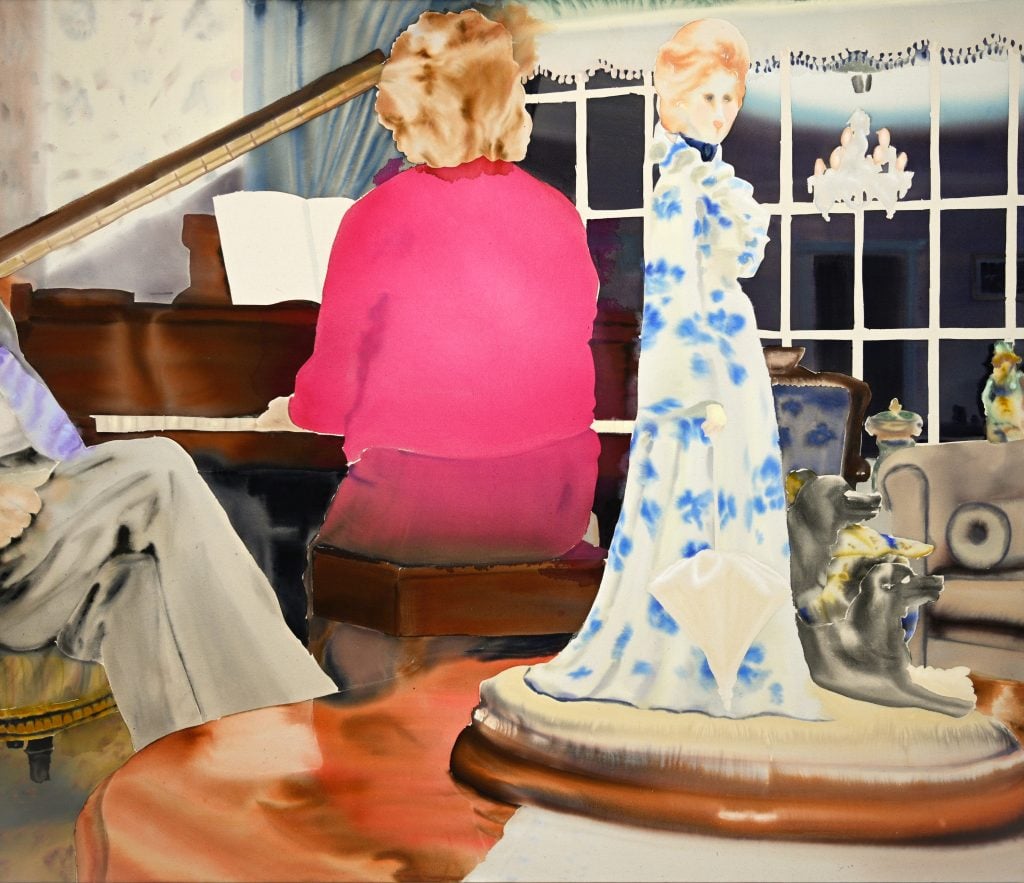
Julia Garcia, The Collector (2024). Courtesy of the artist and Gaa Gallery, New York.
When creating these works, what types of materials or other sources of inspiration did you reference?
Well, I’m always collecting images. There’s a great physical archive in the main library here in Minneapolis that is just cutouts from ads, magazines, calendars. I’ve also been really into stock image sites, and documenting the images I see in banks, pharmaceutical ads, new apartment buildings—images meant to be placeholders for viewers to project their idealized selves onto. Part of my fascination with mannequins comes from this, they’re these almost uncanny spaces for projection, a figure but also a void.
What is something you hope the overall show conveys to visitors?
I think in terms of conceptual or interpretative takeaway, I’ve always felt ambivalent about playing a directorial role. I think that’s an area an artist must let go of having too much control over. As a painter, I’m always most invested in how a painting is made. Very much a material-first, wall-text-later kind of relationship. There are of course ideas I’m working with, the kind of images I’m choosing have a lot of power, and I think it’s really about questioning why or how that works. And the way it’s painted does that by undermining the image’s authority.
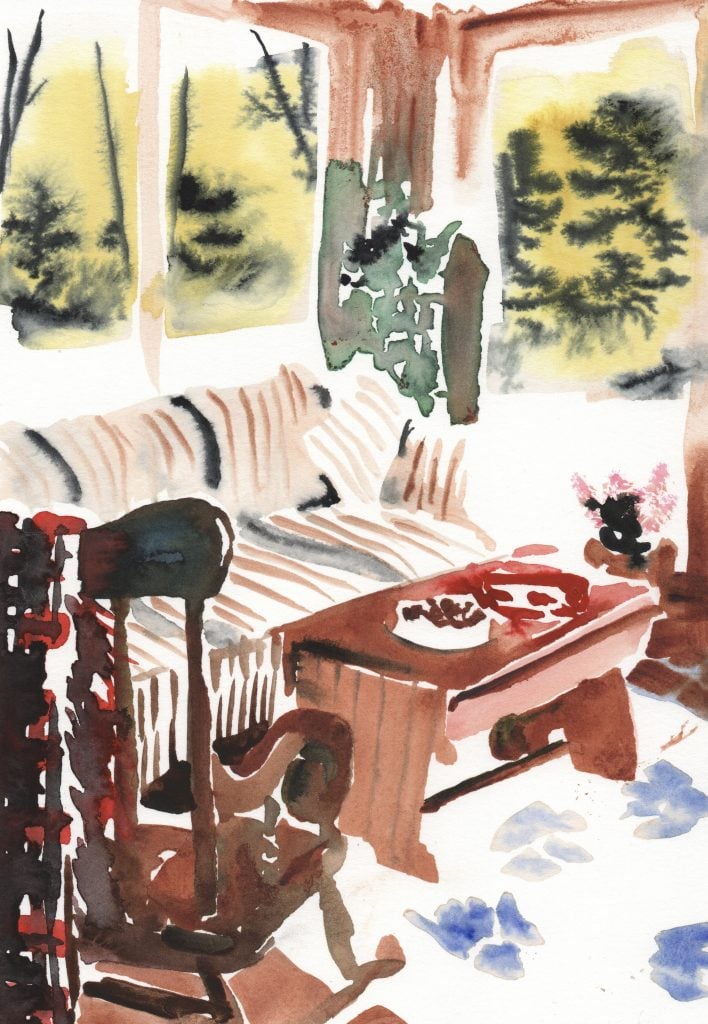
Julia Garcia, Solarium (Study) (2024). Courtesy of the artist an Gaa Gallery, New York.
In your practice, you engage with the history of painting itself. What do you see the role of painting in society today?
I really think that is the nature of painting, and maybe all mediums in general, to be involved in a dialogue with its own history. This is completely just my taste, but I think there is something very special about the release of time in a painting, the unraveling. The potential to resist interpretation and remain outside of language, but also present new ways of seeing or looking. It’s interesting that this can be a consistent quality regardless of the context or time period when something was made. A cave painting is still impactful and relevant now, not just because of history but some quality of looking and being.
Are there any painters, historical or contemporary, that have influenced or continue to inspire your work?
There are too many to name. I got to see Henry Taylor’s “B Side” recently at the Whitney Museum. The force of those works, painting that has an urgency to be realized, I really relate to that. He was a visiting critic when I was in grad school and said my work was like dessert. An incredible feeling. Édouard Manet is another one, the way those compositions are made, there is so much tension between the flat mark and the illusion of space or an image—it’s almost defiant. There are places that it comes apart, a form in the lower corner of the work Boating (1874)—it completely refuses to resolve and that somehow opens the entire work up to doubt. I stood in front of that at the Met in January and got into a debate with a stranger about it. How a painting from 1874 still so alive and mysterious, sparking contention, is the power of painting.
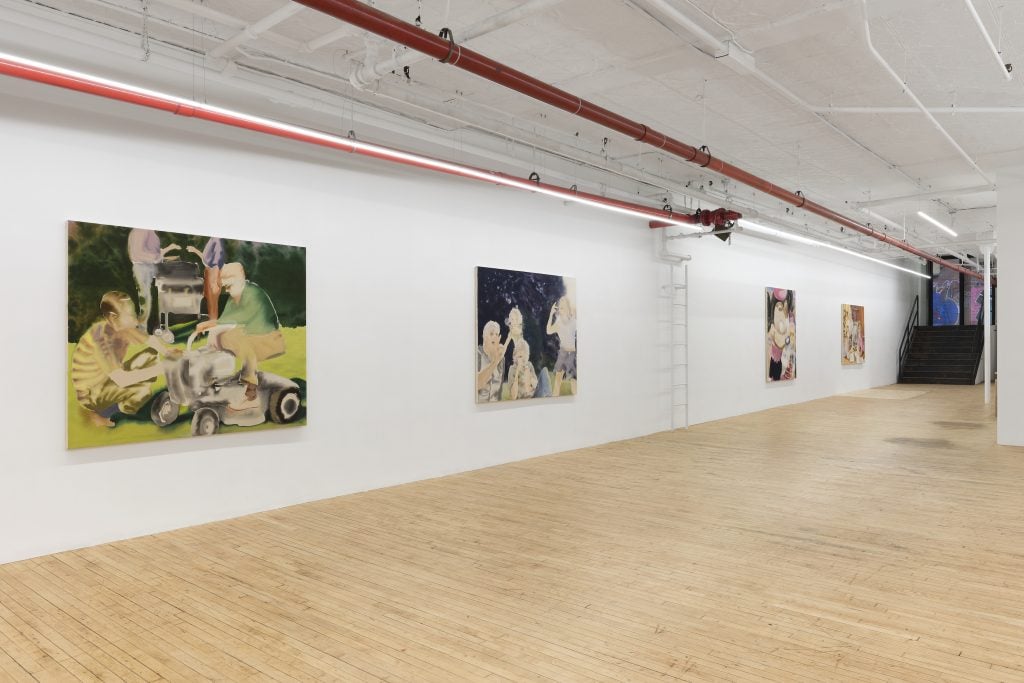
Installation view of “Julia Garcia: Slow Burn” (2024). Photo: Matthew Sherman. Courtesy of the Artist and Gaa Gallery, New York.
Tell us about your practice, is it more fluid and intuitive or is there a lot of research and meticulous planning? Both?
I would say a balance of both. On the front end of a painting there tends to be a lot of planning. Whether it’s smaller watercolor iterations, or the time it takes to layout a composition. I work with tape and X-Acto to mask and control the water flow while I work with the canvas flat on the ground, but once that is in place it becomes very energetic and intuitive. I’m naturally kind of a messy and clumsy person, and very chaotic in the studio, so building structures to hold that in my paintings feels like an important way they’ve developed over time.
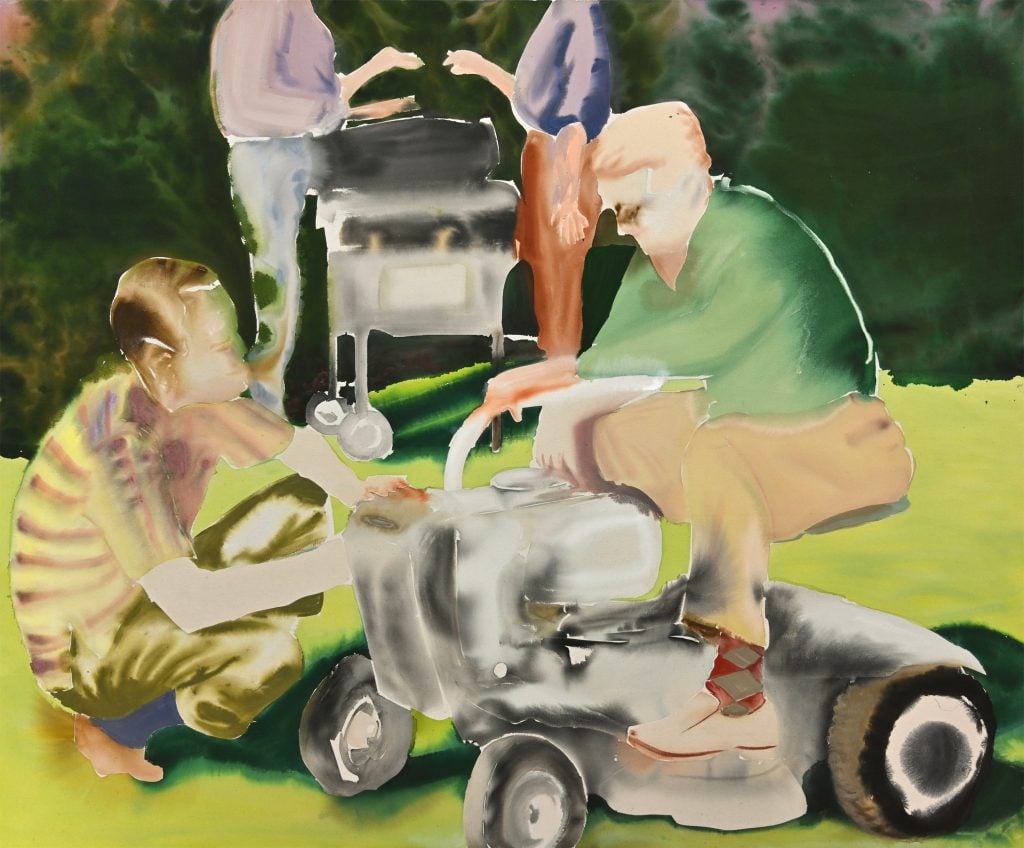
Julia Garcia, The Mower (2023). Courtesy of the artist and Gaa Gallery, New York.
Are there any works or projects you are working at presently, or hope to work on soon?
My attention right now is on an upcoming solo show with KDR gallery in Miami, which will open in June. I’m very excited about it, there’s a lot of personal significance to having a show in Miami—it’s where my abuelos immigrated to from Cuba in the 60s, and I spent a lot of time there when I was young. Getting to do this show feels like a homecoming moment to me, and also a testament to possibilities that they built for our family. I’ll also have a solo show in 2025 with Hair and Nails, my gallery in Minneapolis. They’re incredibly supportive of their artists, and I already know it’s going to be fun to make work for.
“Julia Garcia: Slow Burn” is on view at Gaa Gallery, New York, through May 4, 2024.